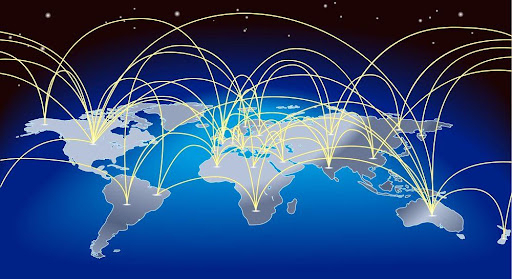
It isn't hard to see the "value" in value chain analysis (VCA). Companies of all shapes and sizes use VCA to understand the different activities and resources that go into creating a product or service, as well as how these different activities each contribute to its final value.
Effective VCA breaks down a company's operations into individual components and activities, helping identify which parts of the pipeline create the most value for customers. Coupled with an understanding of those components' costs, it can be an invaluable tool for internal decision-making.
VCA is an important exercise for any company, but it is even more critical for those with multiple subsidiaries or affiliates in different countries or jurisdictions. Such companies have even more to gain from effective VCA, especially as it applies to transfer pricing.
Transfer Pricing and VCA
Transfer pricing is how a multinational company sets prices for the goods and services traded between its subsidiaries or affiliate entities. In other words, the company puts a price on the goods and services that it sells to itself, usually as part of the creation of a final, client-facing product. Those prices drive revenue and costs for subsidiaries throughout the company's supply chain, impacting their bottom line figures and related tax liabilities.
Traditional transfer pricing often focuses on determining returns for individual entities within a multinational business group. When combined with Value Chain Analysis, it also studies how different components of a business group's supply chain drive the value of its final product.
When a multinational enterprise uses VCA in transfer pricing, it determines how to allocate its global income among its smaller entities. Because each entity is subject to different local tax rates and regulations, how income is allocated globally can be a driving factor for the umbrella company's total tax bill.
To be clear, this practice is not about simply applying the highest costs to the affiliates with the highest tax rates. Effective VCA complies with the market value, or a rational valuation, of the goods being transferred between entities, and does not apply unreasonable prices and costs simply to avoid taxation. Prudent VCA analysis helps multinational corporations minimize their tax burden while complying with tax laws and avoiding disputes with tax authorities.
Breaking Down Your Value Chain
Companies will always have different activities comprising their value chains, no matter how big (or small) they are, or in which sector they operate. According to famed economist Michael Porter, companies can divide the value chain into primary and support activities.
In the context of transfer pricing, VCA takes a similar approach. The activities are divided between value-driving activities and routine activities.
As the name suggests, value-driving activities on the value chain generate the most value in a business. These activities differ from company to company, as it takes some consideration to identify which activities drive the most value. Research and Development ('R&D') is a common value-driving activity among most successful businesses.
A value chain also has routine activities to support value-driving activities. These include procurement, contract manufacturing, marketing services, distribution activities, human resource management, and administration activities, among others.
How VCA Identifies Transfer Pricing Opportunities
By understanding the costs and value generated at each stage of the value chain, companies can identify opportunities to optimize transfer pricing. The overall goal is two-fold:
- To ensure that transfer prices are aligned with market economic principles. In other words, transfer pricing is set in a way that is consistent with how uncontrolled parties would interact or transact in similar independent situations.
- To capitalize on the tax efficiency opportunities.
Routine activities are usually low-risk activities and, per economic principles, should get a routine share of global income. Whereas performing value-driving activities involves significant risks. Thus, value-driving activities command higher returns.
The idea is to strategically place as many routine activities as possible in higher-tax jurisdictions and place the value-driving activities in lower-tax jurisdictions.
An Auto Industry Example
The automotive industry is an excellent example of using VCA to improve transfer pricing strategies. That's because automotive companies are often multinational corporations with complex value chains. They tend to have different subsidiaries throughout their global supply chain, with different specialties, such as supplying a key input. Those entities are subject to different tax rates and regulations, depending on their industry and geographical location.
Let's say Ford wants to restructure or expand its R&D and contract manufacturing activities. VCA can help determine the value of its R&D activities relative to contract manufacturing.
If R&D drives value while manufacturing is a support activity, Ford can then use this information to place R&D activities and related assets in low-tax jurisdictions, and routine contract manufacturing activity in higher-tax jurisdictions. Doing so will minimize Ford's overall tax liability.
Furthermore, allocating higher returns to the R&D and routine returns to the contract manufacturing function will also mean that the prices are set consistent with how independent parties interact in similar situations, ensuring compliance with transfer pricing regulations and guidelines.
Pricing with VCA: Benefits and Challenges
There are several benefits to using VCA in transfer pricing. These include:
- Possible reduction of corporate tax liability.
- Improved compliance, by applying a replicable, rational economic framework to transfer pricing decisions.
- Improved understanding of a company's operations.
- Better data to pull from when negotiating with revenue authorities.
- Increased operational efficiency.
Yet, it is equally important to note that implementing VCA in transfer pricing comes with challenges as well.
For one, restructuring a company's economic framework, which initially requires attention and resources throughout the org chart, may not always make sense from a cost-benefit point of view.
Moreover, transfer pricing based on VCA involves some subjectivity. It is a complex task to determine how much of a product or service's value can be attributed to a specific link in the supply chain, and naturally, there is always room for debate on exact figures. This is especially true when the company is vertically integrated and isn't purchasing intermediate goods on the open market.
Lastly, accounting for intangible assets like patents, trademarks, and goodwill, as well as the impact of state aid laws, adds another layer of complexity.
While these challenges are real, they probably shouldn't dissuade companies from the task, particularly if they operate a complex value chain across different subsidiaries and tax jurisdictions.
Conclusion
Applying VCA to transfer pricing is an innovative way to identify and capitalize on pricing opportunities for tax benefits, as well as to better understand your international business pipeline. If executed effectively, it can generate significant savings and have a material impact on a company's bottom line.
The adaptation of VCA can also provide companies with comprehensive data and analysis to defend their worldwide pricing policies. This data can protect the company in the case of transfer pricing disputes, and remove uncertainty when determining the optimal transfer pricing strategy.
The author is a Transfer Pricing consultant with over nine years of experience at consulting firms like Ernst & Young and KPMG. Holding a Master's degree in Economics, he also specializes in research on Transfer Pricing and International Economics, with multiple publications in prestigious journals.









